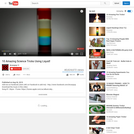
very usefull to understand liquid
- Subject:
- Applied Science
- Material Type:
- Lesson
- Date Added:
- 02/01/2016


very usefull to understand liquid

These lesson plans and activities were developed by Janine Darragh, Gina Petrie, and Stan Pichinevskiy and were previously located on the Reaching for English app. Created for K-12 English teachers in Nicaragua, the materials may be used and adapted for any country's specific context and needs.
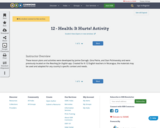
These lesson plans and activities were developed by Janine Darragh, Gina Petrie, and Stan Pichinevskiy and were previously located on the Reaching for English app. Created for K-12 English teachers in Nicaragua, the materials may be used and adapted for any country's specific context and needs.

In this Wonder of the DayR, we learn about why flamingos are pink. Students have the opportunity to explore the Wonder either as a class or individually. With suggestions for different age groups, Wonder #1 has an activity to engage students with drawing, writing description, or both.
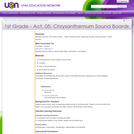
In this lesson students will listen and match sounds ... either rhyming sounds, beginning sounds, ending sounds or vowel sounds.
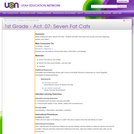
While reading the story "Seven Fat Cats", students will listen and match the sounds (rhyming, beginning, ending, and vowel.)

This lesson will allow students to select and share what details are important on a topic. Groups of students will research a topic and then discuss and determine the top 25 important things someone should know about the topic.

This lesson will allow students to select and share what details are important on a topic. Groups of students will research a topic and then discuss and determine the top 25 important things someone should know about the topic.
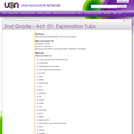
The focus of this lesson is to provide an opportunity for children to develop oral language skills and to record their oral language to share with others.
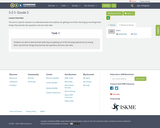
This tool is used for teachers to understand what the students are getting out of their learning by recording three things they learned, two questions and one main idea.

Segment 80g of the Income Tax Act, 1961 licenses benefactors to Societies Registered U/s 80g profits of pay task exemption on their Donation. All NGO ought to attempt and get enlistment under section 80g.
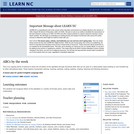
This is an ongoing series of lessons to teach the 26 letters of the alphabet through functional skills that can be used on a daily/weekly basis building on and transferring to other educational task. These lessons incorporate coloring, marking, painting, cutting, pasting, creating, listening and following directions.
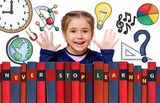
Students will be able to ask and answer questions about key details in a text. Students will be able to compare and contrast the adventures and experiences of characters in stories.
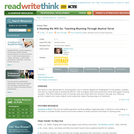
Adapting the song "A-Hunting We Will Go," students put a "whale" in a "pail" and even "take a little "bear" and hug it if we "dare"."
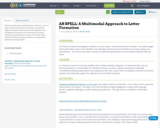
This lesson introduces kindergarten students to correct upper- and lowercase letter formation. As students begin learning the letter names of the alphabet, they will begin practicing correct formation by tracing, copying, and writing letters. This can be done with a variety of tactile learning activities to accommodate individual learning styles.
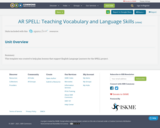
This template was created to help plan lessons that support English Language Learners for the SPELL project.
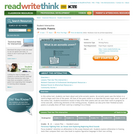
This online tool enables students to learn about and write acrostic poems. Elements of the writing process are also included.
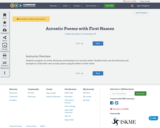
Students are given an online dictionary and exampe of an acrostic poem. Students then use the dictionary and example to create thier own acrostic poem using the letters in their name.
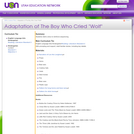
This activity focuses on retelling and performing a story that has been formatted from a traditional version to the setting of the Old West. When retelling a story to someone else, it is important to have the sequence and all parts to the story in correct order. The beginning of a story generally tells who the characters in the story are and what the problems may be. The middle generally explains what attempts were made to solve the problems, and the end generally has the solution, results, and how the story ends. For this activity, students should be familiar with the original tale so they will see the parallel between the original and the adapted version. As you are preparing to retell/role-play the story, you will need to discuss the main characters the students will be portraying and decide what simple props, if any, may be helpful in telling the story.
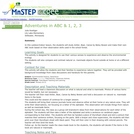
This activity is an indoor/outdoor activity that incorporates both literacy and scientific observation to make an ABC book based on Antler, Bear, Canoe by Betsy Bowen. Family participation is encouraged.